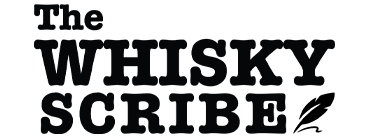Whisky drinkers are often fiercely loyal to their chosen style. You’ve probably heard it before: “I drink bourbon,” “I’m a scotch drinker,” or “Only single malts for me.”
Bourbon vs scotch is one of the most common debates in the whisky world — but what actually makes them different? In this guide, I’ll break down the legal definitions, production methods, and flavour profiles, explore why people lean toward one or the other, and share tips for crossing over.
What Do Bourbon and Scotch Have in Common?
Both are whiskies — grain-based spirits that are fermented, distilled, and aged in wood. They share the same broad family tree, but over time, different regions and traditions have branched off, creating distinct styles.
Defining Scotch
Scotch is whisky made in Scotland under strict legal requirements that have been in place since 1933. To be called scotch, it must:
- Be made in Scotland
- Be made from whole grains of cereals
- Be aged in oak casks for at least three years
Because scotch can be made from various grains, I’ll focus here on single malt scotch — the style most associated with premium bottlings. A single malt must:
- Be made only from malted barley
- Be produced at a single distillery
This is the style I’ll compare directly with bourbon in this article.
Defining Bourbon
Bourbon is often thought of simply as “American whiskey,” but not all American whiskeys are bourbon. To earn the name, it must:
- Be made in the United States (including territories like Puerto Rico or Guam)
- Be made from a mash bill that is at least 51% corn
- Be aged in new, charred oak barrels
Bourbon got its name from Bourbon County, Kentucky, but unlike champagne or sherry, it doesn’t have to be made there — anywhere in the US qualifies if it meets the rules.
Why Corn?
When European immigrants — many from Ireland, Scotland, and Germany — settled in Kentucky, they found that corn grew exceptionally well. Farmers often had surplus corn, which they distilled into spirit during winter. The resulting whiskey was sweeter than the barley-based spirits of Europe, and that sweet profile became a hallmark of the region. In 1935, US Federal Regulations made the 51% corn rule official to protect that character.
The Virgin Oak Requirement
Bourbon must be aged in new, charred oak barrels. Most distillers use American white oak, but the law doesn’t mandate the species.
Originally, this came down to practicality and cost — Kentucky had abundant white oak, and it was cheaper to make new barrels than to ship empty ones back to the distillery. Over time, the flavour contribution of virgin oak became part of bourbon’s identity, so the law preserved it.
It also safeguarded the livelihoods of coopers — skilled craftspeople who make barrels by steaming and bending wooden staves, securing them with metal hoops, and creating a watertight seal without nails or glue.
Ageing Requirements
Bourbon has no minimum ageing unless it’s labelled:
- Straight bourbon – minimum of 2 years
- Bottled in bond – minimum of 4 years
Otherwise, bourbon can be legally called bourbon after less than a year in oak.
Scotch, by contrast, must be aged for at least 3 years regardless of the style.
How Virgin Oak Influences Bourbon
Freshly charred oak imparts tannins, lactones, and other compounds quickly into the spirit. Because corn mash produces naturally sweet whiskey, these bold oak characteristics balance well, and can even help bourbon reach maturity faster than second-use barrels.
Scottish distillers sometimes experiment with virgin oak, but too much can overwhelm the lighter, malt-driven spirit. This is why most scotch is aged in casks that have already been used once, often in bourbon production.
Why Scotch Uses Ex-Bourbon Casks
Because bourbon producers can’t reuse barrels, there’s a constant supply of once-used casks. These second-hand barrels are cheaper and have already given up the harsher oak elements, allowing scotch to mature more slowly and showcase more of the malt’s natural character. Many Scottish distillers consider ex-bourbon casks the purest expression of their whisky.
Flavour Profiles – Bourbon vs Scotch
Bourbon tends to be:
- Sweeter and mellower
- Rich in oak, caramel, grain, nutmeg, cinnamon
- Consistent in profile due to strict mash bill and cask rules
Single Malt Scotch often shows:
- Malt, fruit, nut, spice, lighter wood notes
- Greater variation due to flexible cask options (wine, sherry, port, beer, etc.)
- Possible peat smoke or coastal salinity depending on region
Moving from Bourbon to Scotch
If you enjoy bourbon and want to try scotch, look for:
- Unpeated whiskies
- Port or sherry cask finishes for added sweetness
- Age range of 5–12 years
- ABV under 46% for a softer entry
Example: The Balvenie DoubleWood 12 Year Old – aged in ex-bourbon barrels then finished in Oloroso sherry casks. It combines vanilla from bourbon casks with sherry-driven sweetness and has a mellow, approachable palate.
Crossing Borders – Style vs Name
These naming rules only matter if you want to use the name. Other countries make bourbon-style whiskey but can’t call it bourbon.
Example: Whipper Snapper Distillery in Western Australia produces Upshot Red Corn — a corn based whiskey, aged at least 2 years in virgin American oak. It can’t be called bourbon, but it won “World’s Best Corn Whiskey” at the 2023 World Whiskies Awards.
Similarly, single malt whisky isn’t just Scottish. Distilleries in the US — such as Westland (Washington), Balcones (Texas), Westward (Oregon), and even Jack Daniel’s are producing single malts to a high standard.
Final Thoughts
Bourbon and Scotch aren’t rivals — they’re different branches of the same whisky family. Bourbon’s sweetness and virgin oak richness make it approachable for many; scotch’s variety and nuance reward exploration. Your preference will come down to personal taste, but there’s value (and enjoyment) in trying both.

